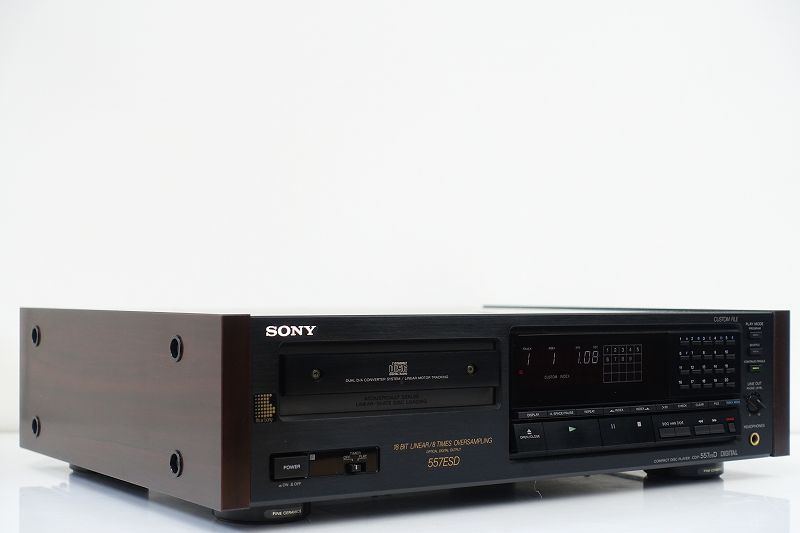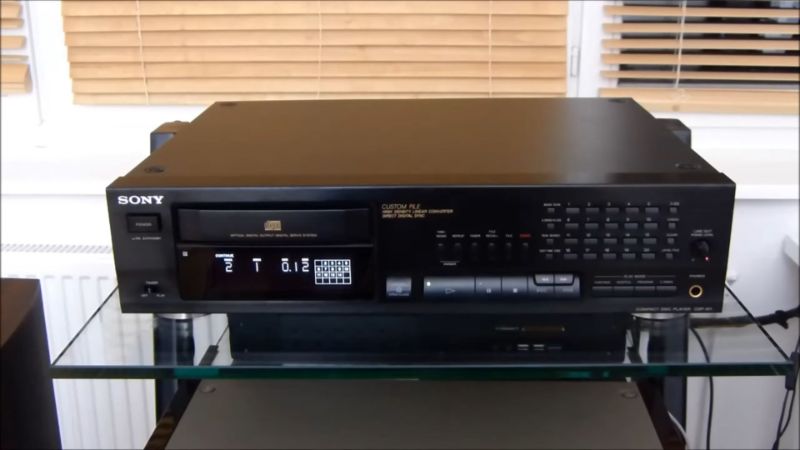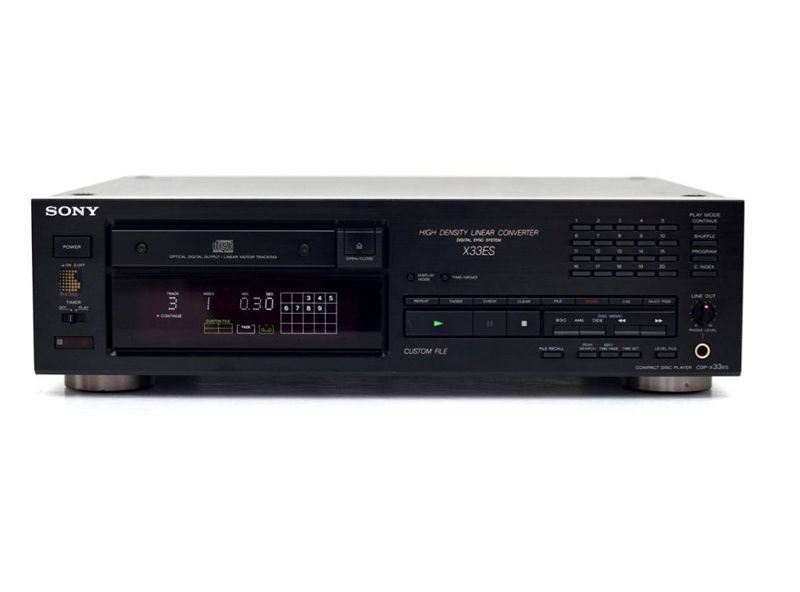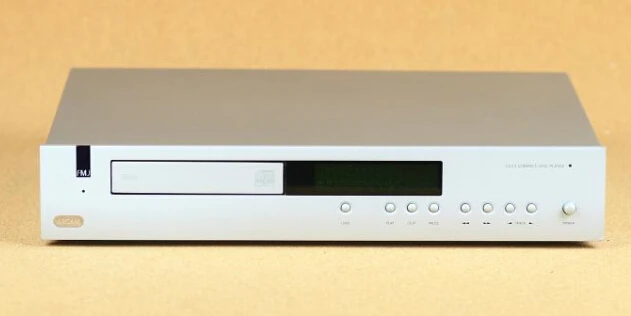Every Japanese business has a specialty, something it is particularly proud of. It was always innovation and miniaturization with Sony, and it was always dependability and affordability with Matsushita (just like Honda and Toyota respectively). Pioneer built their fame with LaserDisc, and TEAC went towards optical storage, particularly CD, following a solid start with magnetic tape. While it was concerned about the DACs used in its silver disc spinners, the company’s true passion was transportations. The P1 transport inaugurated TEAC’s Vibration-free Rigid Disc Clamping System (VRDS) a few years ago, and it has spawned a slew of versions, all of which take the process of reading ones and zeros on a spinning silver disc extremely seriously.
To TEAC, the Esoteric range is what Lexus is to Toyota: it’s the high-end brand that pioneers all of the company’s unique technology. So the fact that the X-05 was only £3,495 new in 2010 was a pleasant surprise. It’s a dual-format CD/SACD player, which is standard in Japan, where SACD availability is significantly better. It borrows heavily from its bigger brother, but adds dual mono Cirrus Logic 24/192 digital-to-audio converters. The casework is akin to a ‘entry level Japanese battleship,’ with just enough brushed aluminium to put any non-Japanese CD player to shame, but not enough to overshadow Esoteric’s better models. Also note the lack of copper (a Japanese fixation), indicating that the pennies are being scrutinized.
The Esoteric isn’t just air on the inside; it has a massive toroidal transformer, bigger than many £1,500 integrated amplifiers, installed on an unique base and insulated from the VRDS Neo (here in VMK-5 version) mechanism. This is made up of a variety of materials, each of which has a different resonance frequency and thus dampens the others. The drawer is made of aluminum-tipped plastic and runs on precision ball bearings with a magnesium platter and an aluminum-braced polycarbonate disc clamp. The drawer action is silky, and there’s a top-mounted glass, similar to Marantz’s famous CD73, that shows how the disc loading procedure is done, with LEDs that fade when the disc is within the machine. Large circuit boards to the left of the mech house the DAC portion and the dual mono analogue output stage. To the outer world, this appears as RCA phono sockets and XLR balanced outputs. Coaxial S/PDIF or Toslink sockets are available for digital. There’s also an external clock input, which is standard on all Japanese machines these days.
Needless to say, having and using the Esoteric is a really pleasant experience. The silver fascia panel, like the blue display, looks a little generically Japanese, but it’s clear and functional. The disc drawer is about as well-made as solid as a plastic object can be, and it glides in and out almost silently with a nice movement. Although it lacks the lightning-quick response time of certain old Japanese high-end CD machines (which were so quick it was almost as if they were playing memory chips rather than discs), it’s about as sleek and positive as anything DSD-equipped I’ve heard.
The X-05 actually astonished me with its softness and delicacy. Many Japanese high-end machines sound powerful and upfront, but the X-05 genuinely shocked me with its softness and delicacy. Sueno Latino’s track of the same name, with swirling, gated analogue synthesizers and Roland drum machine hi-hats repeating gently behind, seemed to appropriately relax the X-05. The Esoteric sounded positively sedate in stead of a top end as sharp as a katana sword, which I’d rather expected. Those hi-hats were clearly defined, splashed with a dash of sweetness, yet they didn’t take over the proceedings or even declare themselves.
The Esoteric made itself known over the midband; while not tonally bright in any sense, it blasted out oceans of detail, floodlighting every facet of this somewhat confused mix from the seductive vocals to the artificial snare drums. However, it was never forced or mechanical in the way that some Japanese machines can be, bombarding you with information simply because they can. What struck me the most was the calmness with which everything was woven together, never sounding forced or hesitant. This resulted in a beautifully natural, informative, and gratifying midband that didn’t obstruct the listening experience.
Bass was intriguing because the Esoteric has a habit of hiding light behind a bushel. The X-05 has a tight, expressive, and confident bass end, although it isn’t particularly forward. The Esoteric can offer punch when needed, although it sits a little back in the mix when called upon, whereas many cheap CD players simply have anaemic bottom end. Although it isn’t overtly bass-heavy, you certainly call it heavy. I loved the way the bass line jumped up and down with great flair in 808 State’s ‘Pacific 707,’ but it never forced itself. Instead, I found myself engrossed in the midband’s activities, marveling at its exquisite precision and elegance.
When I moved to SACD, I kept the same “incisive but not invasive” attitude. Fortunately, I was able to give Esoteric’s own production of Mozart’s ‘Piano Concerto 20 in D minor, K466’ a go (Britten, English Chamber Orchestra). The first movement (the Allegro) was a wonderful recording (both technically and artistically), displaying this player’s clarity and articulation in all their glory. The X-05 emitted a massive soundstage, immersing you in its broad recorded acoustic in the way that only the best vinyl can. Even if it is a little rounded and smooth around the edges by absolute standards, the Esoteric demonstrated its inherent impartiality by rendering the strings beautifully; cellos in particular had a delicious full-bodied flavor that demonstrated you were listening to real acoustic instruments rather than a digital facsimile. The piano was also excellent, with a delicate and beautiful tone and tremendous rhythmic skill. The glittering harmonics of this instrument are best conveyed via SACD, but only if done correctly. The X-05 got it right the first time. Needless to say, it was on a different level than the best CD’s performance, which is exactly as it should be.
The Esoteric isn’t a flashy CD player by any means. It’s not trying to prove to you how large and sophisticated it is, which is somewhat surprising for Japanese heavy metal. However, spending a few hours, days, or even weeks in its company reaps much greater advantages. It’s well-balanced, stable, and in command – but not in a negative sense. Instead, it appears to cut through the recording with a hot knife, butter-like, and simply push it out via your loudspeakers. It’s not the type of machine with a distinct personality that will complement your amplifier, speakers, or environment. When it’s added to the end of a very revealing system, though, things improve, not deteriorate. The principles of this machine are totally bang on, as you can hear. The higher the quality of the recording, the better the sound; the higher the quality of the format (for example, SACD), the more profound the effects.







